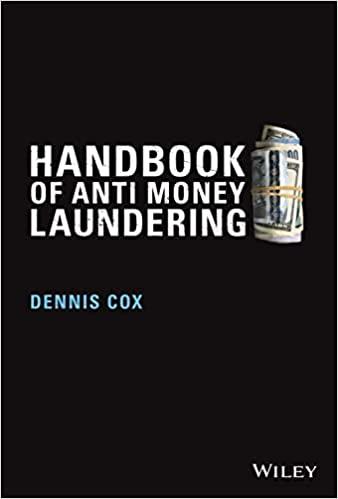Multiple Choice: Problems Interest rates are important in finance, and it is important for all students to understand the basics of how they are determined. However, the chapter really has two aspects that become clear when we try to write test questions and problems for the chapter First, the material on the fundamental determinants of interest rates-the real risk-free rate phas a set of premiums-is logical and intuitive, and easy in a texting sense. However, the second set of material, that dealing with the yield curve and the relationship between 1-year rutes and longer-term rates, is more mathematical and less intuitive, and test questions dealing with it tend to be more difficult especially for students who are not good at math. As a result, problems on the chapter tend to be either relatively eary or relatively difficult, with the difficult ones being as much exercises in algebra as in finance. In the test bank for prior edition, we tended to use primarily difficult problems that addressed the problem of forecasting forward rates based on yield curve data. In this edition, we leaned more toward easy problems that address intuitive aspects of interest rate theory We should note one issue that can be confiring if it is not handled carefully the use of arithmetic versus geometric averages when bringing inflation into interest rate determination in yield curve related problems. It is easy to explain why a 2-year rate is an average of two 1-year rates, and it is logical to use a compounding process that is essentially a geometric average that includes the effects of cross-product terms. It is also easy to explain that average inflation rates should be calculated as geometric averages. However, when we combine inflation with interest rates, rather than using the formulation FRF [(1+1+IP)]-1, almost everyone, from Federal Reserve officials down to textbook authors, uses the approximation FREIP Understandably, this can confuse students when they start working problems. In both the text and test bank problems we make it clear to students which procedure to use. Quite a fee of the problems are based on this basic equation:+IP+MRP+ DRP+ LP We tell our students to keep this equation in mind, and that they will have to do some transposing of terms to solve some of the problems. The other key equation used in the problems is the one for finding the 1-year forward rate, given the current 1-year and 2-year rates (12-year rate)2-(11. year rate)(IX), which converts to X-(1+2yr)21+1yr)-1, where is the 1-year forward rate. This equation, which is used in a number of problems, anumer that the pure expectations theory is correct and thus the maturity risk premium is zero Suppose 1-year T-bills currently yield 7.00% and the future inflation rate is expected to be constant at 4.70% per year. What is the real risk-free rate of return, r Disregand any cross-product terms, Le, if averaging is required, use the arithmetic average. 2.81% 12.12% 2.30% 0.2.23% 2.48% Stocks X and Y have the following data. Assuming the stock market is efficient and the stocks are in equilibrium, which of the following statements is CORRECT? X Y Price Expected dividend yield Required return $25 5% 12% $25 3% 10% a. Stock Y pays a higher dividend per share than Stock X. b. Stock Y has a lower expected growth rate than Stock X. c. Stock X pays a higher dividend per share than Stock Y. d. Stock Y has the higher expected capital gains yield. e. One year from now, Stock X should have the higher price. Jill Angel holds a $200,000 portfolio consisting of the following stocks. The portfolio's beta is 0.88. Stock A B C D Total Investment $50,000 $50,000 $50,000 $50,000 $200,000 Beta 0.50 0.80 1.00 1.20 If fill replaces Stock A with another stock. E, which has a beta of 1.30, what will the portfolio's new beta be? Do not round your intermediate calculations. a. 0.97 b.1.24 0.91 4.1.40 e. 1.08 Exhibit 10.1 Assume that you have been hired as a consultant by CGT, a major producer of chemicals and plastics, including plastic grocery bags, styrofoam cups, and fertilizers, to estimate the firm's weighted average cost of capital. The balance sheet and some other information are provided below. Assets Current assets Net plant, property, and equipment Total assets Liabilities and Equity Accounts payable Accruals Current liabilities Long-term debt (40.000 bonds, $1,000 par value) Total liabilities Common stock (10,000,000 shares) Retained earnings Total shareholders' equity Total liabilities and shareholders' equity $38,000,000 $101.000.000 $139.000.000 The stock is currently selling for $15.25 per share, and its noncallable $1,000.00 par value, 20-year, 9.00% bonds with semiannual payments are selling for $930.41. The beta is 1.22, the yield on a 6-month Treasury bill is 3.50%, and the yield on a 20-year Treasury bond is 5.50%. The required return on the stock market is 11.50%, but the market has had an average annual return of 14,50% during the past 5 years. The firm's tax rate is 25% b. 11.41% c 12,82% $10,000,000 $9.000.000 $19,000,000 $40.000.000 $59.000.000 $30,000,000 $50.000.000 $80.000.000 $139.000.000 Refer to Exhibit 10.1. Based on the CAPM, what is the firm's cost of equity? a. 12,44% d. 13.33% e. 11.92%










